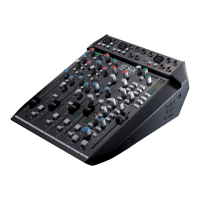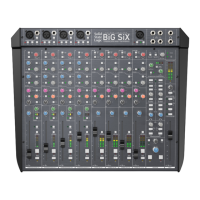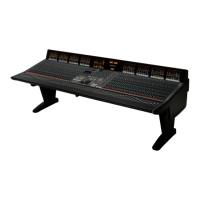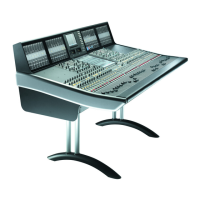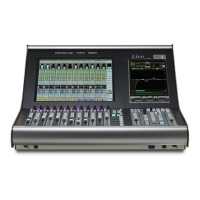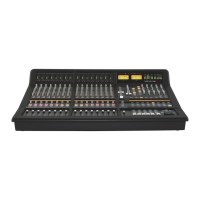Timecode and Sync Standards
Whether you are setting the system up for the first time, or simply dealing with tapes
that have different timecode standards, you need to understand the relationship
between the system ‘sync’ and tape machine timecodes.
All elements of a J Series system require a video sync source for the purpose of system
timing; apart from the J Series Computer, your system may be fitted with a DiskTrack
or VisionTrack. If you are working with digital tape machines then these should also
be fed with the same video sync signal. Whether you use NTSC (525) or PAL (625)
video sync will normally be down to the standard of the country. It also follows that,
where NTSC is the video standard, tapes will be striped with some form of ‘30 fps‘
timecode (dropframe or non-dropframe); where PAL is the standard, 25fps (EBU)
timecode normally prevails.
The J Series computer should always have it’s timecode standard set to match the
timecode on tape. In the FILE/SETUP/Desk Setup/Timecode menu you can select
from a choice of SMPTE D/F, SMPTE 30, EBU 25, HDTV, NTSC FILM and PAL
FILM (see opposite). The latter three standards are explained in Section 9. Note that
the setting here also governs the type of timecode that will be generated by the system
(see Section 7).
If you are mixing without automation, you can select any of the above timecode
standards regardless of whether the system is being fed by NTSC or PAL video sync.
If you are using the automation system, when system timing is that much more
important, the video sync reference must be set to match the timecode on tape. For
SMPTE D/F, SMPTE 30, HDTV and NTSC FILM, the video sync must be set to NTSC
(525). For EBU 25 and PAL FILM, the video sync must be PAL (625).
Depending on your installation, switching from one type of video sync to another may
require changing the sync generator output on the rear of the J Series processor rack or
re-plugging on a video sync patch. Note that the J Series system elements, in common with
most digital tape machines, must be restarted after changing the video sync standard.
An additional entry in the FILE/SETUP/Desk Setup menu, SIO TC:, should normally
be set to Locked. If, however, you want to work in feet/frames (PAL FILM or NTSC
FILM) and are controlling an external machine with a different timecode standard,
this entry should be set to the same timecode standard as the external machine (see
opposite).
See Section 7 – The Machines Menu – for details of the J Series Computer’s timecode
generation facilities.
Machine Control
3-3
17.8.96
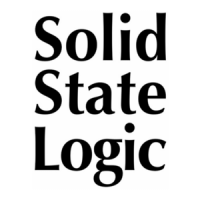
